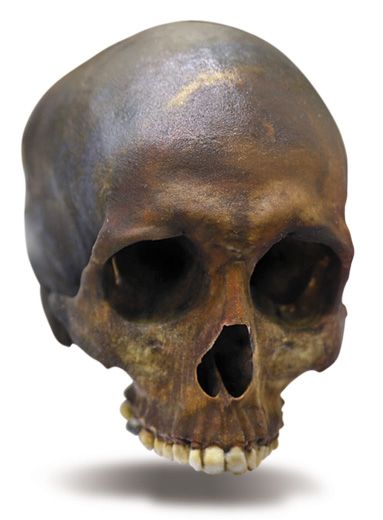The Skull in the Castle
Secretary Clough has the skull of naturalist Robert Kennicott in his office to remind him of the remarkable scientists who work for the Smithsonian
/https://tf-cmsv2-smithsonianmag-media.s3.amazonaws.com/filer/Castle-Robert-Kennicott-skull-631.jpg)
As I work in my office, a skull of Robert Kennicott, a leading 19th-century naturalist, keeps watch from a nearby bookshelf—a tangible reminder of the long list of remarkable people who worked, and in some cases lived, within the ornate red sandstone walls of the Smithsonian Castle.
It’s not the real thing but an eerily precise replica fashioned by the Smithsonian’s 3-D digitalization lab, after Kennicott’s body was exhumed to test a theory that he was poisoned in 1866 while exploring Alaska. (A heart attack is now suspected.) For dramatic effect, I sometimes hold off telling my visitors it’s a copy.
Of Kennicott, “It was said that he handled poisonous snakes as if they were eels, while boasting that no rattlesnake had venom for him,” according to The Castle: An Illustrated History of the Smithsonian Building, a superb new book by Richard Stamm, a Smithsonian historian. He explains how the Institution’s first regents felt that only medieval architecture evoking English universities—soaring towers and all—could properly embody the Institution’s lofty mission.
The first Secretary of the Smithsonian, Joseph Henry, who resided in the Castle with his family, allowed Kennicott and other young men to live in some of the drafty rooms of the Castle’s towers in exchange for their work cataloging specimens. They branded themselves the Megatherium Club (named after an extinct giant sloth), and their charismatic leader was William Stimpson, an expert on marine invertebrates.
The ornithologist Robert Ridgeway (1850-1929) may have been intellectually invigorated by the effort required to get to his South Tower office: He began his day by climbing 87 stone steps, typically two at a time, and published more than 300 articles while working in this building.
In 1872, nearing the end of his life, George Catlin, famous for his paintings of American Indians, was granted use as a studio a room between the Castle’s two North Towers. Nor is the pantheon all male. Mary Agnes Chase (1869-1963) rose from a limited education to become a world authority on grasses, a subject she called “the most fascinating...in the world.” (As a sideline, she helped lead suffragist protests.)
From 1970 to 1998, the Castle served as home to the Woodrow Wilson International Center for Scholars. As fellows there, the future Secretary of State Madeleine Albright, the novelist Carlos Fuentes, the feminist Gloria Steinem and the New York Times columnist Thomas L. Friedman all worked on books.
The Woodrow Wilson Center relocated in 1998 to the nearby Ronald Reagan Building and International Trade Center, but the fellows remain a part of the Smithsonian’s intellectual heritage. Every day, we strive to live up to the standards set by our predecessors—including Robert Kennicott, who gazes at me now.
